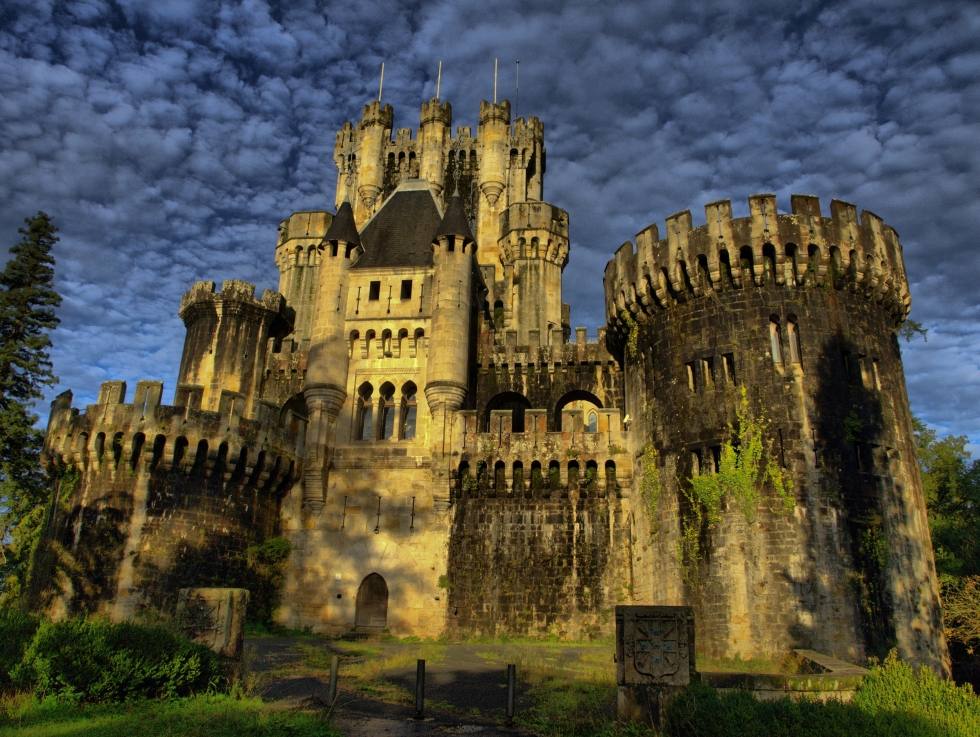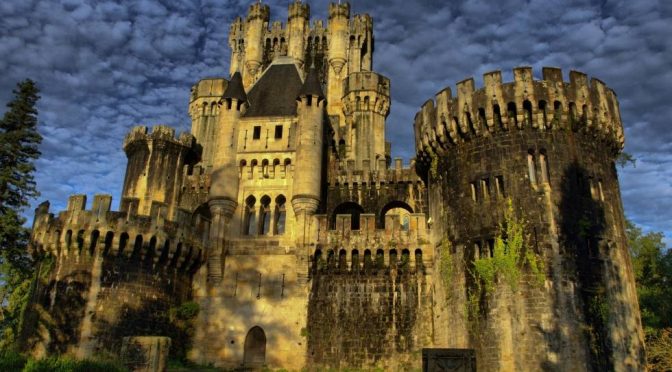In probably 1996, after I had started this page and met Xabier Ormaetxea online, I visited the Basque Country and Xabier took me to see Butrón Castle. At the time, it was open for visitors, with people in period costume welcoming us and showing us the castle. For me, it was pretty impressive – you don’t get buildings like that in the United States, particularly the west. Since then, the interior has been closed to visitors, though the grounds are still open. I’ve gone back a few times to show my family as we peek inside the little windows wherever we could.

- Butrón Castle, or Butroeko gaztelua in Euskara, dates to the Middle Ages. It sits in the forest outside Gatika, just 20 kilometers from Bilbao. The castle has an ancient history. It was first built upon the site of the Butrón family house, itself founded in the 8th century by one Captain Gamíniz, upon a rock called either Ganzorri or Gantzurritz. The first castle, really a tower house, was built in the 11th century.
- The House of Butrón — the family — has a long history with connections to the House of Haro (which was connected to Íñigo López, the first Lord of Biscay), the monarchs of Asturias, Castilla, León, Aragon, Navarra, and Portugal, and even the House of Uppsala/Munsö in Sweden. The first lord of the House of Butrón was Juan Pérez de Butrón, who was born around the year 1210.
- In the 14th century, it was converted into a proper castle. The owners, the Butrón family, were supporters of the Oñaz family in the War of the Bands. Muñatones Castle, which was built by chronicler of the War of the Bands Lope García de Salazar, was inspired by Butrón Castle. For three hundred years, the castle was at the center of many battles that forged the region. In the 16th century, the castle was abandoned.
- In 1878, the castle was completely redesigned and rebuilt by Francisco de Cubas, also known as the Marquis de Cubas. He also designed the University of Deusto in Bilbao. The rebuild was financed by Narciso de Salabert y Pinedo, the Marquis de la Torrecilla, who was descended from the original Butrón line. It was inspired by the Bavarian castles and epitomized de Cubas’s architectural vision.
- In 2005, the castle was purchased by INBISA for 1,629,743 euros (roughly $2.2 million), after the previous owners, who had hoped to turn it into a wedding destination, went bankrupt. The castle was then put up for auction in 2014, but no one bought it. It was sold in December, 2021, to a Russian investor who plans to use it for his “personal enjoyment.”
Primary sources: Castillo de Butrón, Castillos de Olvido; Castillo de Butrón, Wikipedia; BUTRON. Enciclopedia Auñamendi. Available at: https://aunamendi.eusko-ikaskuntza.eus/es/butron/ar-32809/



I’d love to know more about the Russian investor. I bet that’s an intriguing part of the story.